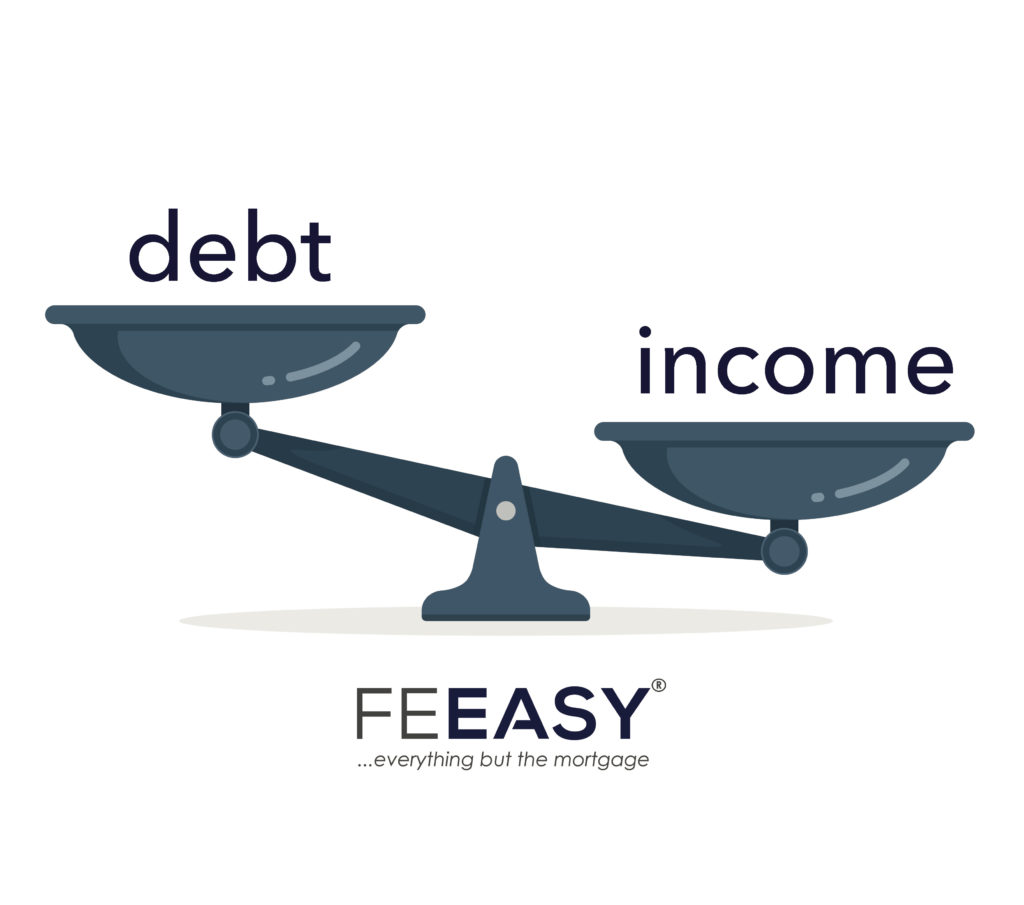Understanding your Debt-to-Income Ratio for a Personal Loan
By John Giannone | October 5, 2022

What is a Debt-to-Income Ratio?
One of the most significant components determining your eligibility for a personal loan is your Debt-to-Income (DTI) ratio. After all, even if you have a perfect credit score, if your DTI ratio is high, it’s unlikely you will qualify for a loan. Put simply, the lower your DTI ratio, the more qualified you will be for a lender. In this article, we will break down what a DTI ratio is, how to calculate it, and how it affects your chances of receiving loan offers through Feeasy®.
According to Investopedia, a “Debt-to-Income (DTI) Ratio is a financial ratio that compares a borrower’s total monthly debt payments to their total monthly income.” We can use an example to understand this concept further.
Example:
Let’s assume John Doe has a gross monthly income of $5,000 and the following monthly debt payments: a mortgage payment of $800, a car payment of $275, credit card payments of $150, and a student loan payment of $350. Remember, your gross income is your income before taxes, or any deductions are removed. To calculate John’s DTI ratio, we can simply follow this formula:
( monthly debt payments ) / (monthly gross income) = debt-to-income ratio
( $800 + $275 + $150 + $350 ) / ( $5,000 ) = 0.315
Represented as a percentage, we can see that 0.315 x 100 = 31.5% of John’s gross income goes towards his debt payments.
Understanding your DTI Ratio:
Every lender sets its own DTI ratio requirements. However, many do not publish their minimum requirements, but NerdWallet provides a useful breakdown of DTI ranges:
- DTI is less than 36%: Your debt is likely manageable relative to your income. You shouldn’t have trouble qualifying for a loan.
- DTI is 36% to 42%: This level of debt could cause lenders concern, and you may have trouble borrowing money.
- DTI is 43% to 50%: Paying off this level of debt may be difficult, and some creditors may decline any applications for more credit. You may want to consider a consolidation loan available through Feeasy.
- DTI is over 50%: Paying down this level of debt will be difficult, and your borrowing options will be very limited.
Using our example, it is likely that John would not have an issue qualifying for a personal loan.
If your DTI ratio is higher than 36%, you may consider lowering it before applying for a personal loan. There are two ways to lower your DTI: decrease your monthly debt payments or increase your income. Generally, decreasing your monthly debt payments is easier than increasing your income, so let’s focus on that.
Lowering your DTI Ratio:
The DTI ratio does not account for the various interest rates or costs of your debt. For example, a 4% interest rate mortgage carries the same weight as credit card debt at 16% APR. If you have high-interest credit card debt, you may consider transferring that balance to a low-interest credit card which would decrease your monthly payment and, therefore, your total monthly debt payments, decreasing your DTI. In this circumstance, simply decreasing the interest rate on some of your debt decreases your DTI without decreasing your outstanding debt. A debt consolidation loan at a lower interest rate than your credit card would have the same effect. Additionally, paying off your car loan or credit card debt can greatly reduce your DTI.
While not the only factor lenders consider when securing a personal loan, your DTI ratio is an extremely important factor for your loan eligibility.
—
Ready to apply for a collateral-free personal loan? Check My Rate or Learn Three Simple Steps to Getting a Personal Loan
Feeasy® is here to assist you at no cost. If you have any questions about personal loans or would like to speak to a Feeasy representative, please feel free to contact us at:
info@itsfeeasy.com | 646-770-1456

